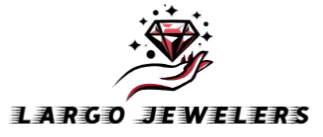Imagine a world where learning seamlessly blends into everyday life, transforming routine tasks into opportunities for growth and understanding. This dynamic approach is called duaction a powerful concept that enhances how we absorb knowledge and develop skills. As we navigate through various aspects of our lives, from education to technology, the principles of duaction can help us unlock our full potential. Join us as we explore practical examples and applications of this innovative method that promises to redefine your learning experience.
Understanding Duaction
Duation is an innovative approach that combines action and learning, emphasizing active participation in the process. It challenges traditional educational methods by encouraging individuals to engage directly with their environment while acquiring new skills or knowledge.
At its core, duaction promotes a hands-on experience where learners connect concepts to real-world applications. This method fosters deeper understanding and retention, making it easier for individuals to integrate what they learn into their daily lives.
Defining Duaction and its Core Principles
Duaction is an innovative approach that merges learning with doing. It emphasizes the idea that knowledge is best retained when applied in real-world situations. This principle encourages active engagement, allowing individuals to experience concepts firsthand.
At its core, duaction promotes a cycle of experimentation and reflection. Learners are not just passive recipients of information but active participants in their educational journey. By focusing on practical applications, duaction fosters deeper understanding and mastery of subjects.
Duaction vs Traditional Learning
Duaction diverges from traditional learning by emphasizing practical application over rote memorization. Instead of passively absorbing information, learners engage actively with the material, making connections to real-life situations.
Traditional learning often relies on lectures and standardized tests, which can create a one-size-fits-all approach. In contrast, duaction encourages personalized exploration and discovery, fostering deeper understanding and retention through hands-on experiences. This shift makes education more relevant and impactful in today’s fast-paced world.
Applying Duaction in Various Fields
Duation finds its place across diverse fields, enhancing the way we learn and apply knowledge. In education, it can transform traditional classrooms into dynamic environments where students engage actively with content.
In technology and business, duaction fosters innovation by combining theory with practical applications. Teams that embrace this approach are better equipped to tackle real-world challenges while refining their skills in a hands-on manner. This method encourages adaptability and continuous learning in an ever-evolving landscape.
Duaction in Education
Duaction in education transforms the traditional classroom experience. By blending learning with real-life applications, students engage more deeply. This method encourages hands-on activities that reinforce theoretical concepts.
Teachers can incorporate duaction through project-based learning and collaborative tasks. These approaches not only make lessons more relatable but also foster a sense of community among learners. As students connect curriculum to their everyday lives, they become motivated explorers rather than passive receivers of information.
Duaction in Technology and Business
Duaction is increasingly vital in technology and business, reshaping how we approach problem-solving. Companies leverage duaction to integrate learning with real-world applications, enhancing employee skills while driving innovation.
For instance, tech firms often encourage on-the-job training through hands-on projects. This method allows employees to learn by doing, fostering adaptability and creativity while developing practical solutions for complex challenges. As businesses embrace this dual approach, they cultivate a more dynamic workforce ready for the demands of the modern market.
Duaction in Daily Life
Duation can be seamlessly integrated into our daily routines. For instance, cooking a new recipe combines hands-on practice with learning about ingredients and techniques. This method enhances both culinary skills and nutritional knowledge.
Similarly, DIY projects at home allow individuals to tackle challenges using trial-and-error while acquiring practical skills. Engaging in such activities fosters creativity and boosts confidence, as each project becomes a stepping stone towards mastery in various tasks we encounter every day.
Benefits and Advantages of Duaction
Duation offers numerous benefits that extend beyond traditional learning methods. Enhanced retention and understanding are key advantages, as learners engage directly with material in real-world contexts. This hands-on approach fosters a deeper grasp of concepts.
Moreover, duaction encourages the development of practical skills essential for problem-solving and critical thinking. By applying knowledge in various situations, individuals gain confidence and adaptability, preparing them for challenges in both personal and professional environments.
Enhanced Retention and Understanding
Duaction enhances retention and understanding by merging theory with practice. When individuals actively engage with concepts, they create stronger mental connections. This hands-on approach makes learning more memorable.
Moreover, applying knowledge in real-world contexts fosters a deeper comprehension of material. As learners encounter practical scenarios, they become adept at linking abstract ideas to tangible outcomes. This not only boosts confidence but also solidifies their grasp on challenging subjects.
Real-World Skill Development
Duation fosters real-world skill development by integrating theory with practice. Learners engage in hands-on activities that mirror actual challenges. This approach cultivates competencies that are immediately applicable in various settings.
For instance, students may participate in projects that require teamwork and communication skills. As they tackle problems collaboratively, they not only grasp concepts better but also prepare themselves for future workplace demands. This synergy between learning and application is essential for personal growth and career readiness.
Improved Problem-Solving and Critical Thinking
Duaction enhances problem-solving by encouraging active engagement with real-life scenarios. This approach allows individuals to tackle challenges head-on, applying knowledge in practical contexts.
Critical thinking flourishes as learners analyze situations more deeply. They learn to weigh options and consider consequences, refining their decision-making skills. By integrating theory with practice, duaction transforms abstract concepts into actionable insights that prepare people for complex problems they might face in everyday life.
Creating a Duaction-Friendly Environment
To foster a duaction-friendly environment, prioritize collaboration and open communication. Encourage sharing ideas and experiences among peers. This creates a supportive space where learning flourishes.
Incorporate tools that blend theoretical knowledge with practical application. Use technology to facilitate real-world problem-solving scenarios. A flexible setup allows for hands-on activities that engage learners and stimulate critical thinking skills effectively. Emphasizing interaction enhances the overall experience and makes duaction a natural part of daily routines.
Implementing Duaction Successfully
To implement duaction successfully, start by integrating hands-on experiences with theoretical knowledge. Encourage active participation and collaboration among learners. This approach fosters engagement and deeper understanding.
Utilize real-world scenarios to make learning relevant. Create projects that require critical thinking and problem-solving skills. By doing so, participants can connect their lessons to everyday situations, enhancing the effectiveness of the duaction process in various fields.
How to Practice Duaction
To practice duaction, start by integrating learning with real-life experiences. Engage in activities that require you to apply new knowledge immediately. For example, if you’re learning about nutrition, cook a healthy meal using what you’ve learned.
Next, seek opportunities for collaboration. Join study groups or community projects where you can share insights and learn from others simultaneously. This not only reinforces your understanding but also makes the process enjoyable and interactive.
Real-World Examples of Duaction
Duaction can be seen in action at cooking classes, where participants learn recipes while simultaneously preparing meals. This hands-on approach enhances their understanding of culinary techniques and flavors.
In tech workshops, learners build projects as they grasp coding concepts. By tackling real-life problems, they apply theoretical knowledge directly, fostering a deeper connection to the material. These examples illustrate how duaction transforms learning into an engaging experience that prepares individuals for practical challenges.
Challenges and Considerations
Embracing duaction can come with its own set of challenges. One significant hurdle is the resistance to change from traditional learning methods. Many people are accustomed to structured environments, making it tough to transition into a more flexible approach.
Additionally, finding the right balance between theory and practical application can be tricky. Without proper guidance or resources, individuals may struggle to implement effective duaction strategies in their daily routines or professional settings.
Navigating Challenges and Finding the Right Balance
Navigating challenges in duaction requires a flexible mindset. It’s essential to recognize that not every situation lends itself perfectly to this approach. Adapting strategies is key, whether in education or daily tasks.
Finding the right balance means integrating duaction without overwhelming yourself or others. Experiment with different methods and be open to feedback. This adaptability will help you discover what works best for your unique circumstances while enhancing learning and engagement along the way.
The Future of Duaction
The future of duaction is promising, especially as technology continues to evolve. We can expect more personalized learning experiences that blend theory with practical applications seamlessly.
As industries adapt, professionals will increasingly rely on duaction methodologies for training and skill enhancement. This approach could redefine workplace dynamics, fostering collaboration and innovation in real-time problem-solving scenarios. The integration of artificial intelligence may further enhance these processes, making learning even more efficient and engaging.
Conclusion
Duation is reshaping how we approach learning and application in various fields. Its core principles of active engagement encourage deeper understanding and retention. By blending theory with practice, duaction enhances our skills in education, technology, business, and everyday life.
Embracing duaction offers numerous benefits like improved problem-solving abilities and real-world skill development. As we create environments that support this method, the potential for growth expands significantly.
Though challenges exist in balancing traditional methods with innovative practices, navigating these can lead to greater rewards. The future of duaction looks promising as more individuals recognize its value across different aspects of life. Adopting this philosophy may unlock new pathways to success for everyone involved.

